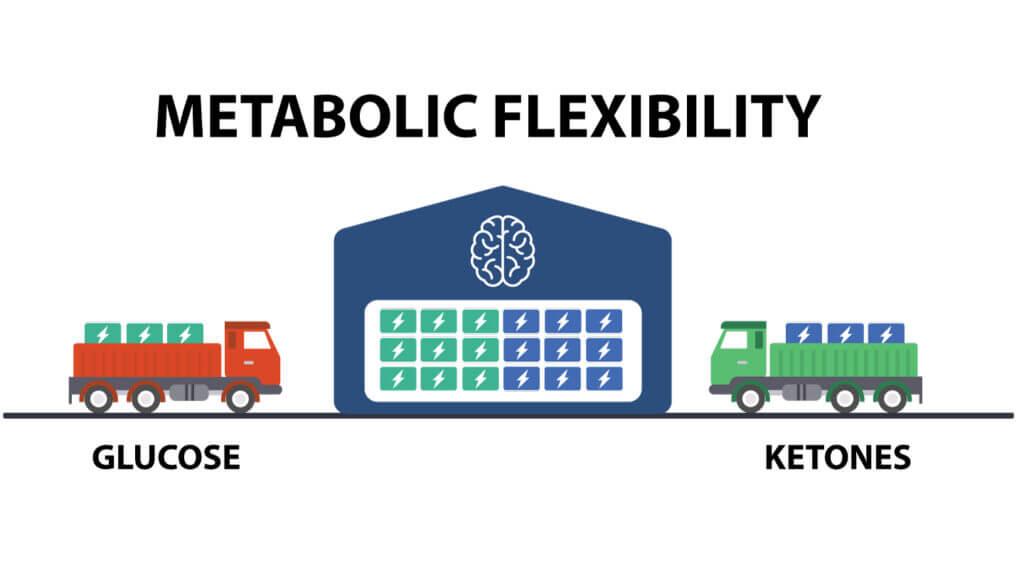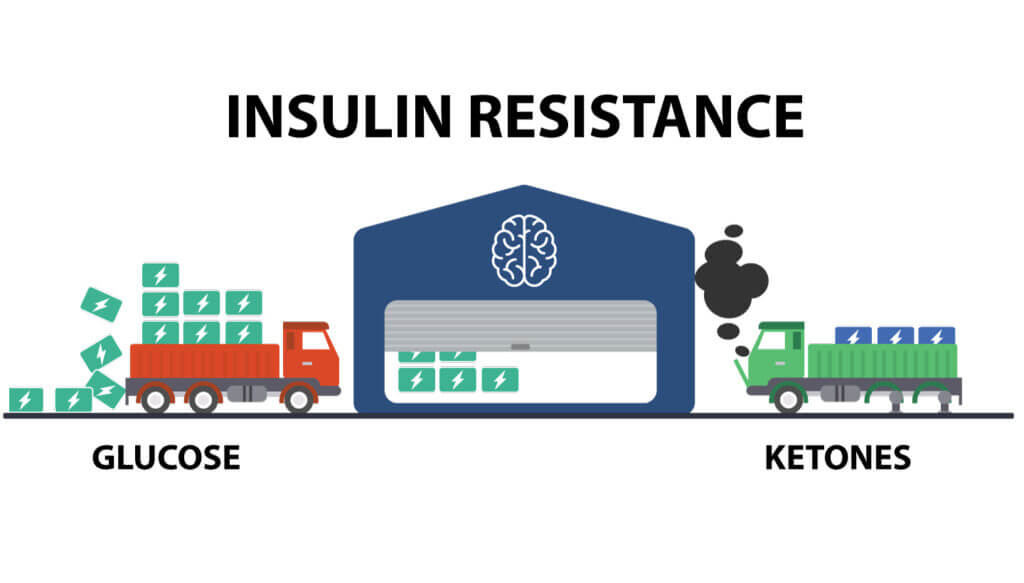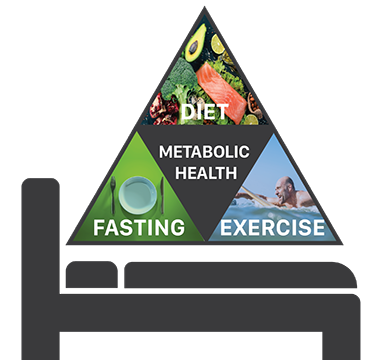October 13, 2023
NEWSFLASH: Chronic Ketosis is Not Your Goal

By Julie Gregory, Chief Health Liaison for Apollo Health
One of the most common misconceptions we get from folks trying to follow the Bredesen Protocol is their mistaken aspiration to remain in a state of chronic ketosis. These participants erroneously think they’ll need to dramatically restrict their carbohydrates and consume gobs of dietary fat for the rest of their lives — yikes! It’s time to set the record straight: Chronic ketosis is not the goal of the program. Notice that the word FLEX (not KETO) is capitalized in “KetoFLEX 12/3” to bring attention to the concept of metabolic flexibility — your ultimate goal.
Metabolic flexibility refers to how we fuel our bodies, including our brains. The human body was designed to be able to utilize two sources of fuel — glucose or ketones. It can adapt and respond to the demands placed upon it, using whatever fuel is available to optimally supply a continuous source of energy. In fact, providing adequate fuel for our brains, the most metabolically demanding organ of our entire body is primary for both preventing and reversing cognitive decline.

We were born with metabolic flexibility — the ability to seamlessly move between these two fuel sources. Supplying a constant state of energy is so important to our very survival that we have an innate protective mechanism, the ability to burn our own stored body fat for fuel (converted by our livers into ketones) when glucose supplies are running low. This allowed early man to be able to thrive despite long periods without food. We tap into this same ancestral protective mechanism while we sleep, just as infants do while waiting for mother’s milk to become available. The ability to switch between these two sources of fuel is a sign of optimal health.
We lose metabolic flexibility when we fail to exercise our ability to use both fuel sources on a regular basis. In our modern era, food (especially food high in processed sugars and carbohydrates) is so readily available that many people rely on glucose as their primary source of fuel. Glucose requires insulin in order for it to be effectively utilized. Over time, as we rely upon glucose as our primary source of fuel, our glucose levels continue to rise, requiring our insulin levels to rise as well in order to try to keep up with demand. When insulin levels are high for long periods, our cells become resistant to its effect, reducing the available glucose supply to our bodies and brains. We experience this phenomenon as insulin resistance.

Our bodies, especially our metabolically demanding brains, are in crisis at this point because they are being deprived of fuel. Despite high levels of glucose, without access to insulin, we are literally starving for energy. While this is exactly the moment our body’s built-in protective mechanism — the ability to burn our own stored body fat as ketones — should kick in, for many people, it doesn’t. Because we’ve spent unnaturally long periods of time exclusively burning glucose as fuel, our bodies lose the ability to tap into our ability to begin producing ketones from our own stored body fat.
The KetoFLEX 12/3 Lifestyle to the Rescue

The great news is that we can reawaken this lost ability to burn ketones as fuel by implementing the three simple ancestral strategies outlined in the KetoFLEX 12/3 lifestyle. By combining the KetoFLEX 12/3 Diet with a daily fast and exercise, our bodies can be retrained to begin burning ketones effectively as fuel to create metabolic health. You’ll note these strategies are depicted upon a bed, as 7-8 hours of restorative, quality sleep is necessary to practice the program effectively.
Rather than staying in chronic ketosis, your goal is to create metabolic flexibility with the KetoFLEX 12/3 Lifestyle to heal any underlying insulin resistance, naturally allowing your body to create ketones and more efficiently utilize glucose to fuel your brain optimally. For most people, reaching a mild level of ketosis once daily will signify that you have reached your goal, typically accompanied by a sense of cognitive clarity and a sense of steady energy.
| How to Test | YOUR KETOSIS GOAL |
|---|---|
| BHB (finger stick) | 1.0 to 1.5mM, once daily |
We recognize that some people may need a higher level of ketosis, more consistently, for optimal cognition. That’s the beauty of the protocol, which allows for personalization. While you’re working to achieve ketosis, keep a journal noting the way that various ketone levels affect your cognition, energy, mood, and sleep. Adjust your ketone goal to best optimize your cognition and overall health.
Depending upon your current state of health, reclaiming your metabolic flexibility may be a journey fraught with highs and lows. Please work closely with your healthcare provider, especially if you’re diabetic and taking medications, so that you can learn how to reduce your dosage or even stop your medication as you heal. Consider a free 30-day trial with Apollo Health for a wealth of educational resources, access to health coaches and practitioners, and admission to our supportive community forum of vibrant brain health pioneers.
By harnessing the ancestral principles of the KetoFLEX 12/3 lifestyle and healing any underlying insulin resistance, you can reclaim your lost metabolic flexibility — restoring a steady source of energy that protects not only your brain but also confers extraordinary strength, resilience, and optimal health.




